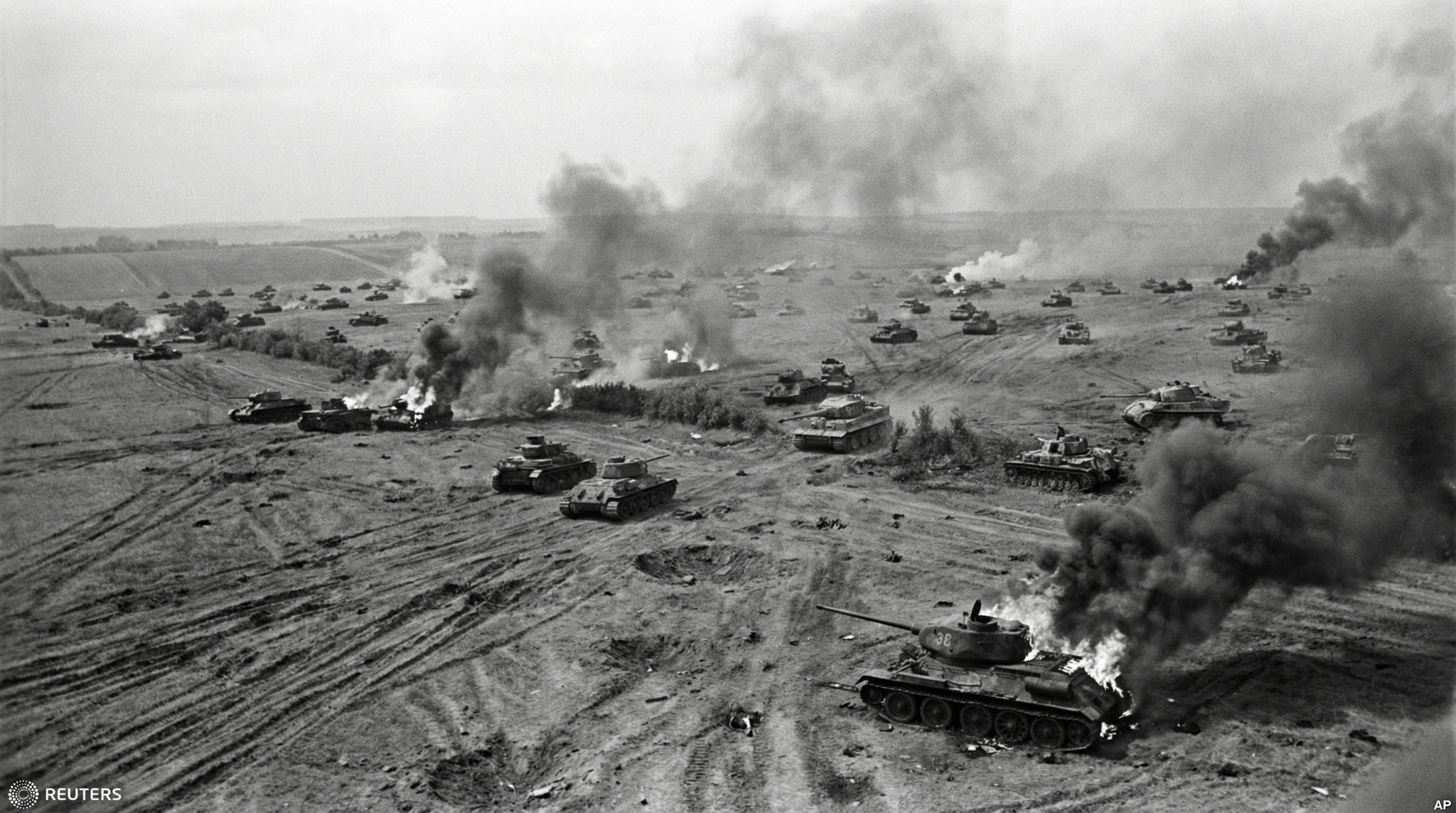TheBattle of Kursk, fought between July and August 1943, stands as one of the most significant military engagements ofWorld War IIand a critical turning point on the Eastern Front. Known as the largest tank battle in history, this clash between Nazi Germany and the Soviet Union had far-reaching consequences for the outcome of the war and the balance of power in Europe.
Background to the Battle of Kursk
In the summer of 1943, following their devastating defeat at Stalingrad, the German forces sought to regain the initiative on the Eastern Front. The city of Kursk, located in western Russia, became the focal point of their offensive strategy. The Germans aimed to encircle and destroy the Soviet forces in the region, hoping to weaken the Red Army and shift the momentum back in their favor.
However, the Soviets were well aware of the impending German attack. Utilizing intelligence gathered from various sources, including the British and their own reconnaissance efforts, the Soviets prepared extensively for the confrontation. They fortified the Kursk salient with deep defensive positions, extensive minefields, and a vast network of trenches, making it a formidable obstacle for the advancing German forces.

This extensive preparation meant that when the German offensive finally began, it collided with layered Soviet defenses. The Red Army’s ability to anticipate German moves and prepare in depth became a decisive factor in the battle’s outcome.
The Largest Tank Battle in History
The battle began on July 5, 1943, with Operation Citadel, the German offensive aimed at crushing the Soviet defenses around the Kursk salient. The initial phase of the battle saw intense fighting as German panzer divisions clashed with Soviet tank units in a series of brutal engagements across a broad front.
The centerpiece of theBattle of Kurskoccurred near the town ofProkhorovkaon July 12, where thousands of tanks from both sides engaged in close combat, resulting in massive losses. The chaotic, short-range fighting turned fields into graveyards of destroyed armor and made it difficult for either side to fully exploit technological advantages.
Despite the Germans' superior tank technology, including the fearsome Tiger and Panther tanks, the Soviet forces managed to hold their ground. The Red Army's well-prepared defenses, combined with the sheer determination of its soldiers, blunted the German advance. The fierce resistance culminated in a strategic stalemate, with neither side able to achieve a decisive breakthrough.
The Battle of Kursk showed that even advanced weaponry could be neutralized by depth of defense, effective intelligence, and the will to endure heavy losses.
Turning the Tide of War on the Eastern Front
As the German offensive stalled, the Soviets launched a massive counteroffensive, codenamed Operation Kutuzov, on July 12. This counterattack targeted the northern and southern flanks of the German forces, gradually pushing them back and reclaiming territory. The Soviets' ability to go on the offensive marked a significant shift in the war, as they began to regain control over the territories lost to the Germans earlier in the conflict.
TheBattle of Kurskwas not just a tactical victory for the Soviet Union; it also had profound strategic implications. The heavy losses inflicted on the German army, both in terms of manpower and equipment, severely weakened their ability to conduct large-scale offensives on the Eastern Front. From this point onward, the Germans were forced into a defensive posture.
As the Soviets steadily advanced westward, they liberated much of Eastern Europe from Nazi occupation. This sustained pressure eventually contributed to the encirclement of Berlin and the final collapse of Nazi Germany in 1945.
Legacy and Lessons of the Battle of Kursk
The Battle of Kursk is remembered as one of the most pivotal confrontations of World War II. It demonstrated the effectiveness of Soviet military strategy and the resilience of its forces in the face of a determined enemy. The battle also underscored the importance of intelligence, preparation, and the ability to adapt to changing battlefield conditions.
For Germany, the failure at Kursk marked the beginning of the end of their campaign on the Eastern Front. The losses suffered during the battle contributed to the eventual collapse of Nazi Germany's military capabilities and its ultimate defeat in the war. The battle revealed the limits of German offensive power and the growing strength of the Red Army.
Today, theBattle of Kurskis studied by military historians and strategists as a prime example of large-scale armored warfare and the impact of strategic decision-making in determining the outcome of a conflict. It remains a testament to the bravery and sacrifice of the soldiers who fought in one of the most intense battles of the Second World War, and a key moment when the momentum of the war irrevocably shifted against Nazi Germany.